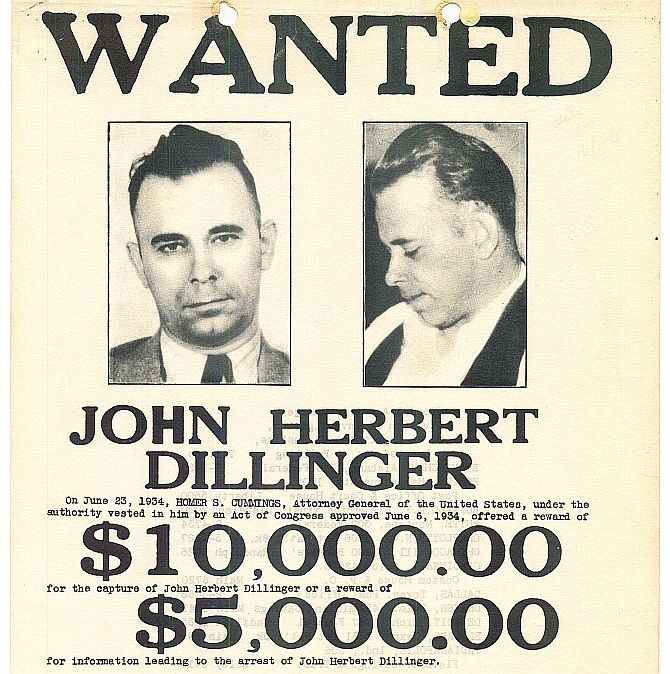 They broke free yet failed to evade the clutches of law.
They broke free yet failed to evade the clutches of law.

The daring prison break executed by David Sweat and Richard Matt from the Clinton Correctional Facility in New YorkState on June 6, 2015 has been making headlines around the world.
Using power tools smuggled into their cells the two prisoners went on the run in America after successfully tunnelling out of their maximum security prison.
Sweat and Matt cut holes in the steel walls of their cells -- inspired by scenes in the 1994 movie The Shawshank Redemption -- before following a series of pipes and tunnels under the 30ft high walls of the prison.
The duo also followed tips learnt from the 1979 movie Escape From Alcatraz, including the use of dummies left in their beds to fool guards during night-time checks. Three weeks on, Matt was killed by police while Sweat was shot twice before being taken into custody and treated for his injuries at hospital.
Let's take a look at other most daring jailbreaks in history:
The Alcatraz Jailbreak (June 11, 1962)

Alcatraz Federal Penitentiary, a maximum-security prison that sits on a tiny island off the coast of San Francisco, US, was billed as a prison that no man could ever escape from.
However, Americans Clarence Anglin, John Anglin, and Frank Morris broke that myth after seven months of meticulous planning.
Morris and his accomplices used were a hand-drill, electric hair-clipper, a vacuum motor, saw blades and, believe it or not, life-like dummies that they created in the prison.
Morris and his gang escaped on June 11, 1962, through a ventilator. This story has even inspired a Hollywood film, Escape from Alcatraz, starring Clint Eastwood.
The Great Escape (March 24-25, 1943)

This daring escape executed during the height of the Second World War was the subject of the 1963 John Sturges movie, The Great Escape.
In January 1943, Roger Bushell led a plot for a major escape from Stalag Luft III, a German Air Force prisoner-of-war camp. The plan was to dig three deep tunnels, codenamed 'Tom', 'Dick', and 'Harry'. Each of the tunnel entrances was carefully selected to ensure they were undetectable by the camp guards.
To keep the tunnels from being detected by the perimeter microphones, they were very deep -- about 9 metres (30 ft) below the surface. The tunnels were very small, only two feet square, though larger chambers were dug to house the air pump, a workshop, and staging posts along each tunnel. The sandy walls of the tunnels were shored up with pieces of wood scavenged from all over the camp.
Of the three tunnels, only 'Harry' was completed. Two hundred men tried to escape out of it on March 24, 1944, only to discover that it was too short; when exiting the tunnel, the prisoners found themselves completely visible and near a guard tower. Because of this and several other setbacks (including an air raid), only 76 men made it out of the tunnel that night. Out of the 76 men, only 3 evaded capture. Fifty men were killed and the rest were captured and sent back.
Maze Jailbreak (September 25, 1983)

Executing the biggest jailbreak in British history, 38 Provisional Irish Republican Army members escaped from Northern Ireland's Maze Prison, a maximum security prison considered to be one of the most escape-proof prisons in Europe.
With guns smuggled into the prison, the escapees took over H-Block 7 of the prison, killing a guard and wounding several others.
When a van delivering food supplies arrived, the men took the passengers hostage and used the vehicle to escape. Within a few days of the break, 19 prisoners were apprehended. The remaining 19 were shuttled to safe houses and some were sent to the US and other countries.
The official inquiry into the escape placed most of the blame onto prison staff, who in turn blamed the escape on political interference in the running of the prison.
Jailbreak, Frank Abagnale style (April 1971)

Remember Leonardo DiCaprio's 2002 hit movie Catch Me If You Can in which he essayed the role of international fraudster Frank Abagnale.
The real-life Abagnale, today an American security consultant was believed to have assumed no fewer than eight identities, including an airline pilot, a physician, a US Bureau of Prisons agent, and a lawyer, in his teenage days.
After being sentenced to 12 years in prison in the United States, Abagnale -- in his autobiography -- says he had the fortune of being transported to a detention facility by a Marshall who had forgotten his prisoner's papers.
Abagnale seized upon the opportunity, persuading guards that he was actually an undercover prison inspector. Authorities at the time often used the ploy to test their jails, and the guards duly swallowed the bait.
Abagnale writes that he was treated much better in prison than other inmates thanks to his 'undercover' status -- but the ploy really paid off once he'd enlisted the help of a friend, whom he calls in the book 'Jean Sebring'. Sebring apparently doctored two business cards -- one an FBI agent's, the other a prison inspector's -- and then smuggled them into the prison for Abagnale, who wasted little time in telling his guards that he needed to speak to the FBI agent.
The guards called the number on the agent's card, Sebring picked up, told them that she needed to meet Abagnale outside the prison, and the con man walked straight out of the prison's front door, presumably laughing all the way.
The Korean Houdini (September 12, 2012)

Yoga has its benefits, our Prime Minister has made us realise that. But back in 2012, South Korean yoga teacher Choi Gap-bok made the world believe that it could help in escaping prison as well.
On September 12, Choi was arrested on suspicion of robbery and placed in a detention cell at the police station in the city of Daegu.
Five days later, he asked the guards for his special 'skin ointment', and they gave it to him and went off to sleep.
While the officers were sleeping, the lean-bodied Choi applied skin ointment all over his upper body and squeezed through the tiny food slot in the cell bars in 34 seconds, earning him the nickname 'Korean Houdini' by media. Mind you, the food slot measured a mere 15-centimeter-high and 45-centimeter-wide (6 x 18 inches).
While Choi's yoga skills got him out of jail, they weren’t enough to keep him from going back. Six days after his escape, Choi was apprehended by the police on the rooftop of an apartment building. This time he was sent to a cell with a far smaller food slot.
Tihar Jailbreak (March 16, 1986)

Speaking of jailbreaks, how can the case of Charles Gurmukh Sobhraj be forgotten?
Sobhraj executed one of the most sensational jailbreaks from India's much-guarded yet much-maligned Tihar Jail in Delhi allegedly on his birthday.
Implicated in more than 20 murders in various countries, including Thailand, Nepal and India, the law caught up with Sobhraj in 1976, when he was arrested in connection with the murder of a French tourist, Luc Salomon. Lodged in Tihar, he ordered drug-laced sweets for the jail staff on the pretext of his birthday celebrations.
When the securitymen collapsed under the influence of drugs, he simply took the keys and walked away.
Nicknamed 'The Bikini Killer' and 'The Serpent', Sobhraj was re-arrested but his offence of breaking out of Tihar jail ensured that he would not be extradited to Thailand where he might have faced the death penalty for more serious crimes. He was convicted and jailed in India from 1976 to 1997.
After his release, he returned to Nepal and was arrested and tried there. He was convicted of murder and sentenced to life imprisonment by the country's Supreme Court on August 12, 2004.
Pascal Payet, the Frenchman in love with the helicopter

Pascal Payet is a James Bond of sorts when it comes to daring escapes.
The French murderer has gained international notoriety for his role in a series of daring prison breaks that used helicopters as their modus operandi.
Payet's first escape came in 2001, when he arranged for friends to collect him from the roof of a village prison in a helicopter. Two years later, he orchestrated a rerun of the events to help three more prisoners escape the confines of the jail.
Payet was later caught and sentenced to 30 years in prison for murder in 2005.
By July 2007, Payet was one of the most closely-monitored prisoners in France and was never kept at the same prison for over six months. But despite that, he managed to again break free of the law in 2007 by taking advantage of Bastille Day celebrations to jump into a hijacked helicopter flown by four masked men.
He was re-arrested months later near Barcelona and transferred to a secret location, where he now remains.
Sarposa Jailbreak (April 24, 2011)

The Sarposa prison is a high security prison in Kandahar, Afghanistan, that is used to hold Taliban militants and other criminals including drug traffickers.
On April 24, 2011, a 350m tunnel that had been dug across a highway and under the prison walls, was used in the escape of about 500 Taliban inmates. The escape has been compared to the Stalag Luft III tunnel escape (read above).
The breakout was not detected for four hours, during which most of the prisoners were transported away.
Although the government claimed to have re-arrested several dozen escapees, Taliban reports claim this to be untrue.
This extraordinary break was not even the first such feat by the Taliban. At the same prison in 2008, a coordinated attack by insurgents freed some 900 prisoners.
John Dillinger's soap trick (1934)

An American gangster and bank robber in the Depression-era United States of 1930s, Dillinger escaped from jail twice.
In 1933, he and his gang engineered a daring escape from a prison in Lima, Ohio after they used smuggled rifles to gun down two guards. But Dillinger's most famous escape of all came in 1934, after he was arrested on the heels of a number of famous bank heists.
Dillinger was lodged in the 'escape-proof' Lake County Jail, a prison that was guarded by an army of policeman and National Guard troops.
In what has become something of a legend, Dillinger is said to have fashioned a phony gun out of a bar of soap and used it to force his way out of the jail. In his typical brash style, he then stole the Sheriff’s brand new Ford and made his escape to Illinois. Ironically, it was this move -- driving a stolen vehicle across state lines -- that got the FBI on his trail and eventually led to his killing.
The Midnight Express (1975)

Billy Hayes, an American student, was caught trying to smuggle four pounds of drugs out of Turkey on October 7, 1970.
He was originally sentenced to four years and two months in a Turkish prison. With his release date weeks away, he learned that the authorities had chosen to penalize him with a life sentence. He was transferred to the Imrali Jail on July 11, 1975.
Refusing to spend another 30 years, Hayes, who was given a job on the docks, escaped in a rowboat in 1975. He made his way to Istanbul and, when he could not secure a hideout, dyed his hair and made his way to Greece, where he was eventually deported to the US.
In 1977, Hayes wrote the book Midnight Express about his ordeal.










